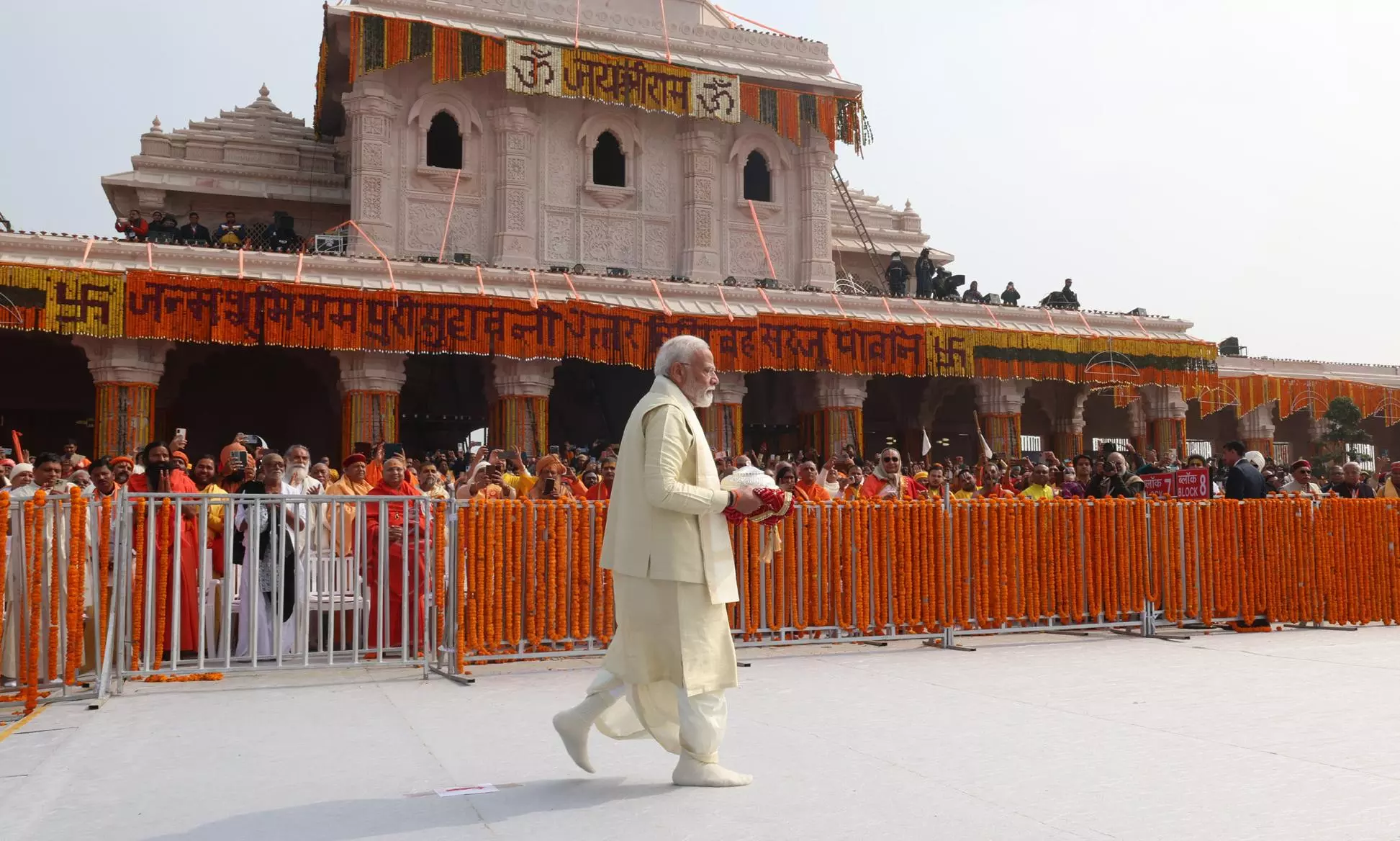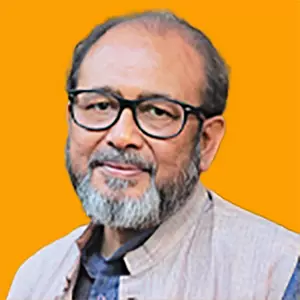
- Home
- India
- World
- Premium
- THE FEDERAL SPECIAL
- Analysis
- States
- Perspective
- Videos
- Sports
- Education
- Entertainment
- Elections
- Features
- Health
- Business
- Series
- In memoriam: Sheikh Mujibur Rahman
- Bishnoi's Men
- NEET TANGLE
- Economy Series
- Earth Day
- Kashmir’s Frozen Turbulence
- India@75
- The legend of Ramjanmabhoomi
- Liberalisation@30
- How to tame a dragon
- Celebrating biodiversity
- Farm Matters
- 50 days of solitude
- Bringing Migrants Home
- Budget 2020
- Jharkhand Votes
- The Federal Investigates
- The Federal Impact
- Vanishing Sand
- Gandhi @ 150
- Andhra Today
- Field report
- Operation Gulmarg
- Pandemic @1 Mn in India
- The Federal Year-End
- The Zero Year
- Science
- Brand studio
- Newsletter
- Elections 2024
- Events
- Home
- IndiaIndia
- World
- Analysis
- StatesStates
- PerspectivePerspective
- VideosVideos
- Sports
- Education
- Entertainment
- ElectionsElections
- Features
- Health
- BusinessBusiness
- Premium
- Loading...
Premium - Events

The fact that Modi was the principal 'yajman' of the ceremony marks the complete erasure of lines between religion and politics
Without any doubt, Monday’s ceremony in Ayodhya was, for all practical purposes, a victory ceremony with Prime Minister Narendra Modi presiding over the proceedings of this epochal achievement.
There should also be no ambiguity that this Hindu triumphalist moment, including what various speakers said, was insidiously choreographed to project the pre-eminence of ‘one’.
By the end of the function, when a Hindu temple was used to deliver political speeches, it was evident that the event was all about crowning one person who, starkly, was not the deity but the king.
Modi cult
Despite India being a nation where pluralism has been the eternal credo (‘unity in diversity’ is not just a statement for the record in the country), the central message that was broadcast was solely about the monistic idea that the Sangh Parivar is trying to popularise in India: One people, one culture, one god, one belief, one political perspective, one value system, one Ram, even one Ramayana, and so on.
This was also a ceremony where the prepared speeches were aimed at further boosting the already soaring cult of Modi.
Take, for instance, the speech of Swami Govind Dev Giri, Treasurer of Ram Janmbhoomi Teerth Kshetra Trust, which for a major part was but a string of eulogies to Modi. Or, the Rashtriya Swayamsevak Sangh (RSS) chief Mohan Bhagwat’s compliment – in which he said that Modi had been on a more rigorous fast than what was required.
Transforming Ram
Bhagwat’s laudatory verbosity stood in sharp contrast to the previous power equation between the two organisations – when the RSS was considered the BJP’s ideological fountainhead. The intention of Bhagwat, Giri and several others was to undoubtedly project Modi as the central figure on the day when a new central sacred space for Hinduism was unveiled.
From a time when in the course of the Ram Janmabhoomi agitation, it was often said that Ram was omnipresent, his space as presiding deity has been somewhat confined – after this mega event, all shrines and temples, in homes or in public spaces, would be considered as subsidiaries of the ‘main’ or ‘real’ temple.
Plurality destroyed
Given that the imagination of Ram was different from person to person, region to region, and community to community, reducing the god to one space imposes limitations on the character. The Prime Minister listed out various characteristics and roles that Ram played in people’s lives but the interpretation remains bound by a political straightjacket. Sadly, if the plurality of the Ramayana and its protagonist was destroyed in the course of the four-decade long agitation, this visually awe-inspiring temple presents a singular way to deify the deity.
The Ram that has been now been ingrained in the country’s political discourse is a long way away from what Allama Iqbal penned in the first decade of the last century. Iqbal termed Ram as zindagi ki rooh (the soul of life) and roohaniyat ki shaan (the pride of spirituality) before bestowing on the epic hero, the title of Imam-e-Hind.
Second Republic
Modi famously declared in 2014 that he was proud of being a Hindu nationalist. He may now say that he takes pride at his elevation as what Christophe Jaffrelot said in a conversation to The Federal as the “highpriest of Hinduism”.
The fact that Modi was the principal yajman, or the host of the ceremony in which other gods are traditionally invoked for instilling the idol with ‘life’, marks the complete erasure of lines between religion and politics on the one hand and religion and the Indian state on the other.
Through the day, people embedded within the Sangh Parivar contended that the republic that emerged in 1950 after liberation from British colonialism was in effect only the ‘First’ one and that the ‘Second Indian Republic’ was birthing on this day.
India’s loss
If the future indeed turns that way, India may no longer be able to stake claim to its principal title in the international arena all these decades – the largest democracy in the world. Instead, the operative word would be replaced by ‘theocracy’, again a word Jaffrelot affixed on post-January 22 India.
Without doubt, this moment was without precedent in Independent India and it would take much to effort and time to successfully decipher the full impact. But the realisation cannot be escaped that at the end, this was a ‘Modi style spectacle’ in which devotion or what the Hindus term as Dharma for the believers takes a secondary position to embossing the presence of authority or unfurling the flag of victory.
Event manager
It needs to be recalled that none other than LK Advani had once remarked about Modi, his protégé of yore, that he was a good “event manager”. As far as events and its management go, this was certainly among the most seamlessly organised.
In the run-up to the Big Event, numerous triangular saffron flags across the nation – minuscule to gigantic – were circulated. These acted essentially as stamps marking presence in colonies, in alleyways, in temples, and on vehicles. Their visible presence heralded the arrival of the Hindu who was no longer hesitant about his or her identity.
These flags were visual markers of Hindu hegemony aimed to take ‘revenge’ for having been ‘humiliated’ in medieval India by Muslim emperors.
Falsified history
Over the years, falsified history – important to note that conquerors from outside India, after establishing kingdoms here, ruled in collaboration with local Hindu ruling classes – played a crucial role in furthering the Hindutva narrative. Barring specific instances, most emperors were not driven by a desire to stamp their religious presence.
But picking several leaves from Joseph Goebbels’s political manual, this was repeatedly used, sparing not even the United States Congress – recall Modi’s visit to Washington in June 2023, when the false narrative of Hindu victimhood was sanctified.
In the course of the Ram temple agitation, many claims were made regarding “proving” the Lord’s birth at that “very spot”.
But over time, as evidence was either not found, or was wanting, the “matter of faith” argument was forwarded – that issues related to divine beliefs were beyond the pale of scientific scrutiny.
Whither 500 years?
In recent weeks and even propagated by Modi, the story of 500 years of struggle for the Ram temple was circulated. It was of no consequence that earliest historical accounts of demand for the temple – and not demolition of the mosque – were made in the middle of the nineteenth century.
The agitation that paved the way for the BJP to climb up to its current position of political dominance was all about instilling pride. But from the 1988-slogan in the birth centenary year of its founder Keshav Baliram Hedgewar – "garv se kaho, hum Hindu hain" ("say with pride we are Hindus") – much ground has been traversed. Now the pride is accompanied by putting down the ‘other’.
Ugly reality
Questions emerge in the wake of the flag of hegemony being hoisted in every square – in villages, towns, and cities. A nation develops only if the livelihood of people improves.
The event in Ayodhya was all about adorning the political leaders with celebrities playing the role of courtiers. The failure of the government to reach real promised objectives has forced its leaders to hype the subjective sentiments like pride and prejudice.
Conflict is difficult to internalise and manage all the time. The risk of social turbulence runs high in today’s India.
Time will tell if the creases can be ironed and the alienated communities can find acceptance and peace despite being socially ostracised and considered suspect at all times. The politics of identity tends to shorten the fuses of everyone. That needs to be remembered by choreographers of the great Indian political theatre.
(The Federal seeks to present views and opinions from all sides of the spectrum. The information, ideas or opinions in the articles are of the author and do not necessarily reflect the views of The Federal.)


